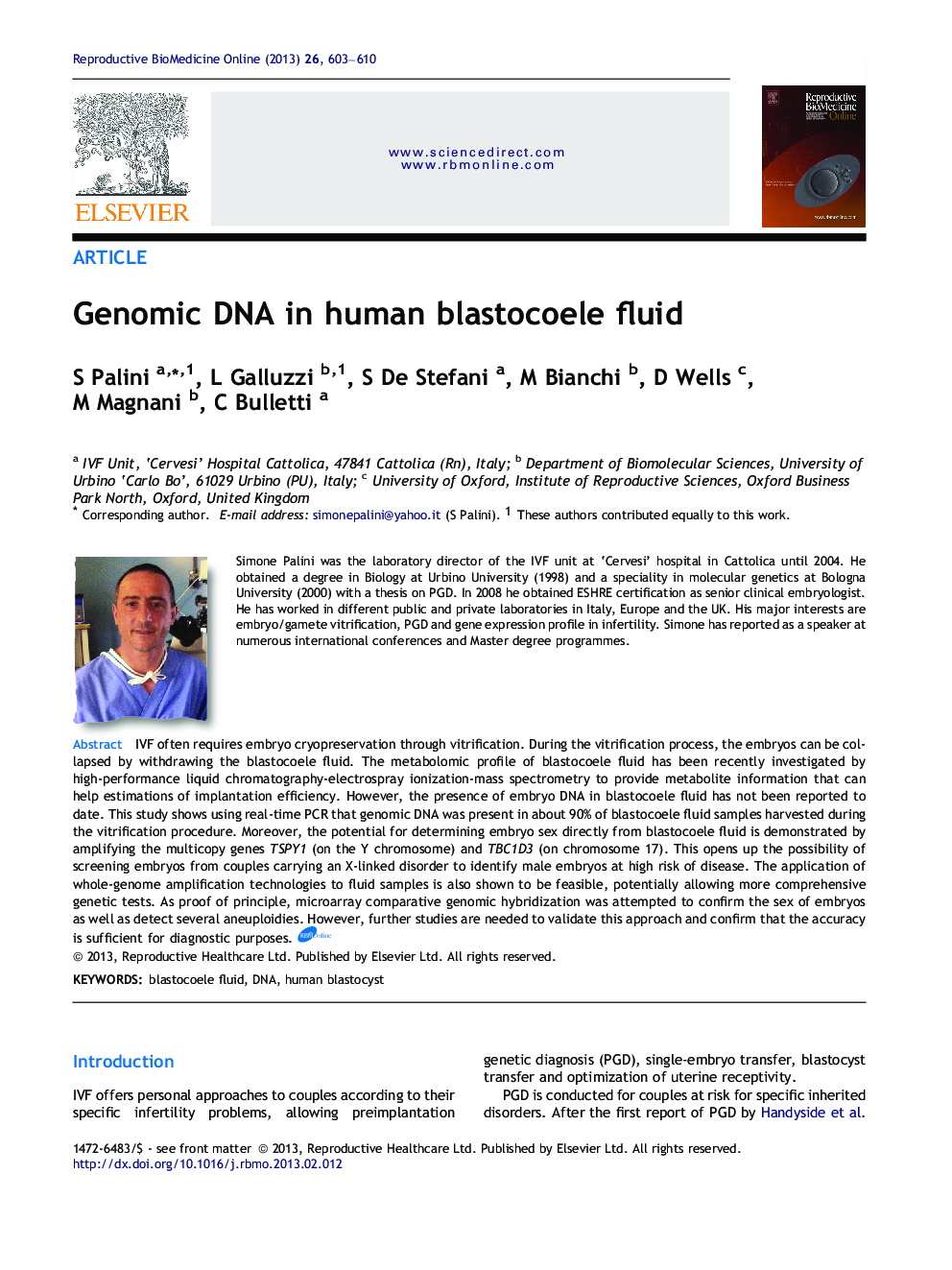| Article ID | Journal | Published Year | Pages | File Type |
|---|---|---|---|---|
| 6189156 | Reproductive BioMedicine Online | 2013 | 8 Pages |
IVF often requires embryo cryopreservation through vitrification. During the vitrification process, the embryos can be collapsed by withdrawing the blastocoele fluid. The metabolomic profile of blastocoele fluid has been recently investigated by high-performance liquid chromatography-electrospray ionization-mass spectrometry to provide metabolite information that can help estimations of implantation efficiency. However, the presence of embryo DNA in blastocoele fluid has not been reported to date. This study shows using real-time PCR that genomic DNA was present in about 90% of blastocoele fluid samples harvested during the vitrification procedure. Moreover, the potential for determining embryo sex directly from blastocoele fluid is demonstrated by amplifying the multicopy genes TSPY1 (on the Y chromosome) and TBC1D3 (on chromosome 17). This opens up the possibility of screening embryos from couples carrying an X-linked disorder to identify male embryos at high risk of disease. The application of whole-genome amplification technologies to fluid samples is also shown to be feasible, potentially allowing more comprehensive genetic tests. As proof of principle, microarray comparative genomic hybridization was attempted to confirm the sex of embryos as well as detect several aneuploidies. However, further studies are needed to validate this approach and confirm that the accuracy is sufficient for diagnostic purposes.IVF offers personal approaches to couples according to their specific infertility problems. IVF includes a preimplantation genetic diagnosis, single-embryo transfer, blastocyst transfer and optimization of uterine receptivity. These procedures require a valid embryo cryopreservation system. Vitrification is a cryopreservation method that offers superior survival and pregnancy rates performing an artificial shrinkage of a fully expanded blastocyst. This procedure can be performed with different methods, including laser-pulse, repeated micropipetting, microneedle puncture or microsuction, and there is a significant improvement in survival rates when blastocysts were collapsed. With microsuction, the blastocoele fluid is withdrawn and (typically) discarded. The aim of this study was to investigate the presence of DNA in blastocoele fluid. Recently, the metabolomic profile of blastocoele fluid was characterized, but to date, no studies have reported evidence of DNA. Here, using a real-time PCR-based approach, we showed that genomic DNA was amplifiable in about 90% blastocoele fluid samples analysed. Moreover, we demonstrated the potential for monitoring sex-linked diseases directly from blastocoele fluid, by amplifying the multicopy genes TSPY1 (on the Y chromosome) and TBC1D3 (on chromosome 17). The application of whole-genome amplification technologies to fluid samples has also shown to be feasible, potentially allowing more comprehensive genetic tests (i.e. microarray comparative genomic hybridization). However, further studies are needed to validate this approach for reliable diagnostic purposes.
